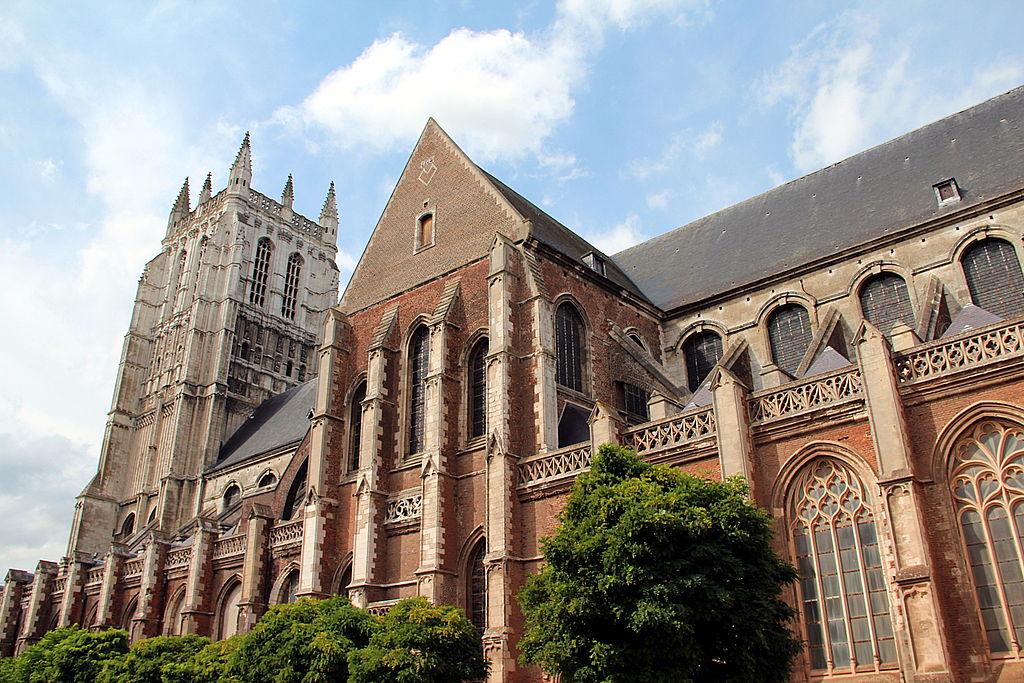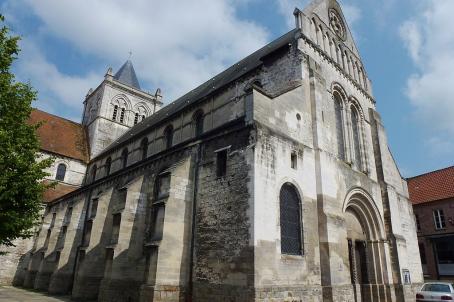Collégiale Saint-Pierre d'Aire-sur-la-Lys
Église Catholique Collégiale Saint-Pierre d'Aire-sur-la-Lys has been a parish church since 1802.
About this building
Classified as a Historical Monument since 1862, the collegiate church has impressive dimensions (105 meters long; 40 meters wide ; and a vault height of 20 meters – to which must be added the 65 meters of the tower), because it has welcomed pilgrims over the centuries who have come to honour an important relic of Saint James. The base of the pillars, visible in the choir, bear witness to the remains of the primitive church consecrated in 1166, and destined to be the collegiate church of the chapter of canons founded by the pious count of Flanders, Baudouin V . The construction of the actual church of Saint Peter took place throughout the 16th century, which makes this monumental building one of the major testimonials to flamboyant gothic, and Flemish Renaissance styles in the region. As for the tower, which collapsed shortly after having been built, it was rebuilt in 1634.






